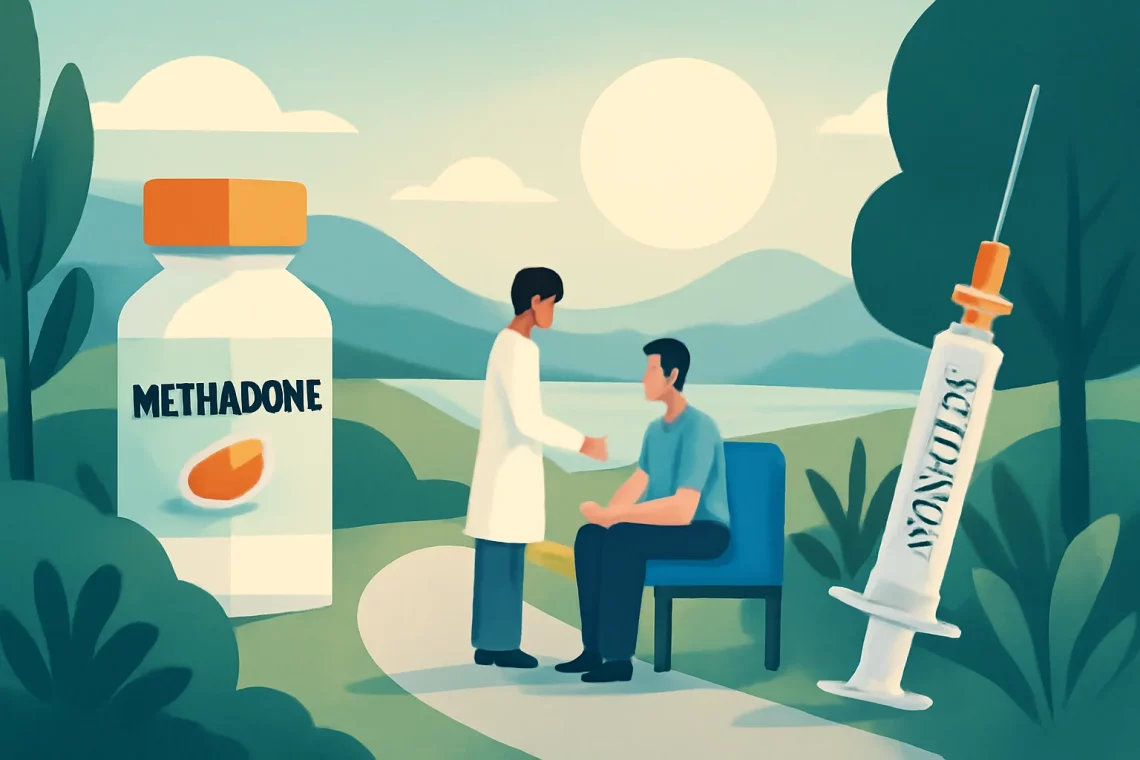
Methadone vs Sublocade: Choosing the Right Treatment for Opioid Addiction
The opioid epidemic has prompted a greater focus on effective treatments for opioid use disorder (OUD). As healthcare providers and patients seek solutions, various medications have emerged to address the complexities of addiction. Among these, methadone and Sublocade have gained prominence. While both are used in the treatment of OUD, they offer different mechanisms of action, administration methods, and patient experiences. Understanding these differences is crucial for patients, caregivers, and healthcare professionals alike. The choice between methadone and Sublocade can significantly impact a patient’s recovery journey, influencing everything from adherence to overall quality of life. With the rising importance of personalized medicine, it is imperative to explore these treatment options thoroughly to better inform decisions surrounding opioid addiction recovery.
Methadone Overview
Methadone is a long-acting synthetic opioid that has been used for decades in treating opioid use disorder. It works by binding to the same opioid receptors in the brain as other opioids, such as heroin or prescription painkillers, but with a slower onset and longer duration of action. This helps to alleviate withdrawal symptoms and cravings without producing the euphoric high associated with short-acting opioids.
One of the primary benefits of methadone is its ability to stabilize patients who are struggling with addiction. When administered in a controlled setting, it allows individuals to regain functionality in their daily lives. Methadone is typically dispensed at specialized clinics, where patients are monitored to ensure they are adhering to their treatment program. This level of oversight can be beneficial for those who may struggle with the temptation to misuse their medication.
However, methadone is not without its challenges. It is a Schedule II controlled substance, meaning it carries a risk of dependence and misuse. Patients on methadone may face stigma, both socially and within the healthcare system. Additionally, the requirement to visit a clinic daily can be a barrier for some individuals, limiting their ability to integrate into society fully.
Despite these challenges, methadone has been shown to be effective in reducing opioid-related overdose deaths and improving retention in treatment programs. For many, it remains a cornerstone of opioid addiction treatment and continues to be a vital option for those seeking recovery.
Sublocade Overview
Sublocade is a relatively newer treatment option for opioid use disorder, introduced as a long-acting injectable formulation of buprenorphine. Unlike traditional buprenorphine, which is typically taken as a daily sublingual tablet, Sublocade is administered as a monthly injection, offering a convenient alternative for patients who may have difficulty adhering to daily regimens.
The primary mechanism of action for Sublocade is similar to that of methadone; it works by partially activating opioid receptors in the brain, which helps to alleviate withdrawal symptoms and cravings. However, because it is a partial agonist, Sublocade has a ceiling effect that reduces the risk of misuse and overdose, making it a safer option for some patients.
One of the significant advantages of Sublocade is its ease of use. The monthly injection not only simplifies the treatment process but also minimizes the stigma associated with daily clinic visits. Many patients find that having a once-a-month appointment is more manageable and allows for greater flexibility in their daily lives.
Sublocade has also been associated with a lower incidence of withdrawal symptoms compared to other medications. This can lead to improved patient satisfaction and better treatment outcomes. Nevertheless, it is essential for patients to remain engaged in counseling and support services, as medication alone is not a cure for addiction.
While Sublocade presents a promising alternative for treating opioid use disorder, it may not be suitable for everyone. It is crucial for patients to discuss their medical history and treatment goals with their healthcare provider to determine the best course of action.
Comparing Effectiveness and Safety
When comparing methadone and Sublocade, it’s essential to consider their effectiveness and safety profiles. Both have been shown to reduce opioid cravings and withdrawal symptoms, but they operate through different mechanisms and have varying side effects.
Methadone has a long-standing history in addiction treatment and is often viewed as a gold standard. It effectively reduces illicit opioid use and is associated with improved social functioning in many individuals. However, the potential for misuse and dependency remains a concern, particularly if patients are not closely monitored.
On the other hand, Sublocade’s unique delivery system and partial agonist properties make it a safer option for some patients. The risk of overdose is significantly lower with Sublocade, partly due to its ceiling effect. This makes it an attractive choice for individuals who may be at higher risk for misuse or those who have previously struggled with treatment adherence.
Both treatments have their side effects. Methadone can lead to sedation, constipation, and potential cardiac issues, while Sublocade may cause injection site reactions and withdrawal symptoms in some patients. The choice between the two often depends on individual circumstances, including medical history, lifestyle, and personal preferences.
Ultimately, the decision should be made collaboratively between the patient and their healthcare provider, considering the unique needs and circumstances of the individual seeking treatment.
Conclusion and Considerations
In conclusion, both methadone and Sublocade offer valuable options for individuals seeking treatment for opioid use disorder. Methadone has been a cornerstone of treatment for many years, while Sublocade provides a newer, more convenient alternative with a different safety profile.
Patients should consider their treatment goals, lifestyle, and history of substance use when choosing between these medications. It is crucial to engage in open discussions with healthcare providers to determine the most appropriate treatment plan.
As with any medical treatment, ongoing support and counseling play a vital role in recovery. It is essential to remember that medication alone does not address the psychosocial aspects of addiction. A comprehensive approach that includes counseling and social support is necessary for long-lasting recovery.
This article is not intended as medical advice. Anyone facing health issues should consult a qualified healthcare professional for personalized guidance.




